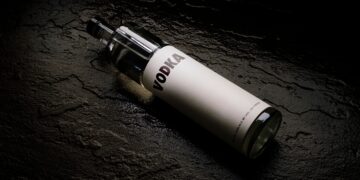Although it can be precarious to be on a waiting list for an organ transplant, it’s a sadly common phenomenon that varies depending on what is needed.
As CNN reported , this wait is particularly hard for the 4,000 Americans waiting for a heart at any given time. That’s because the months and even years they potentially have to wait before a donor heart becomes available can put their other organs at risk.
To address this issue, some medical networks can make artificial hearts available to make these long waits easier. And as one man’s incredible story illustrates, these devices can do more than we might have expected.
In 2007, Stan Larkin of Ypsilanti, Michigan suddenly collapsed in the middle of a basketball game.

According to CNN, he would soon learn that both he and his brother Dominique have a genetic heart condition called familial cardiomyopathy, which enlarges at least one of the heart’s chambers and keeps it from efficiently pumping blood.
In their cases, the condition caused arrhythmias and failures in both sides of their hearts.
As Dr. Jonathan Haft — who would eventually operate on Larkin — told Science Daily, “They were both very, very ill when we first met them in our intensive care units. We wanted to get them heart transplants, but we didn’t think we had enough time.”
The severity of Larkin’s situation meant he had to be outfitted with a total artificial heart, which meant he had to go without the real thing starting in 2014.

But while CNN reported that Dominique would be able to secure a human heart transplant after six weeks in the hospital, Larkin would end up having to wear his device for 555 days.
As he said, “I was shocked when the doctors started telling me that I could live without a heart in my body and that a machine was going to be my heart. Just think about it – a machine.”
But just as amazingly, it doesn’t seem that having this artificial heart in inside of him slowed Larkin down at all.

According to CNN, the heart was connected by two tubes to a 13-pound power source called a Freedom Driver, which he was able to wear in a backpack.
And while he was eventually able to get a transplant of his own in May of 2016, Larkin found himself able to live more or less as he did before his collapse.
As Haft put it, “Stan was very active and did an immaculate job taking care of himself and taking care of the equipment used to keep him alive.”
But what seemed to come as a surprise to Haft was that Larkin was able to play multiple pick-up games of basketball while he had the device inside of him.

In Haft’s words, “He really thrived on the device. This wasn’t made for pick-up basketball, Stan pushed the envelope with this technology.”
But while Larkin said the power source just felt like a backpack full of books, it’ll no doubt be easier to play now that he doesn’t need it anymore.
h/t: CNN , Science Daily

















































